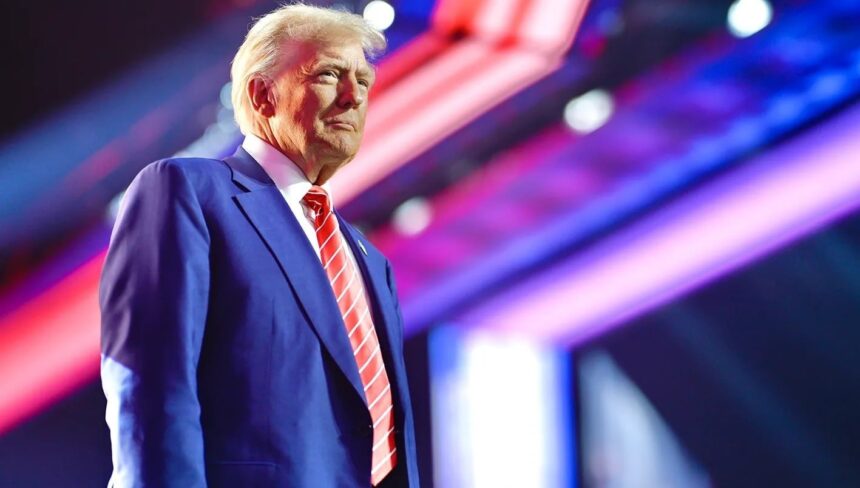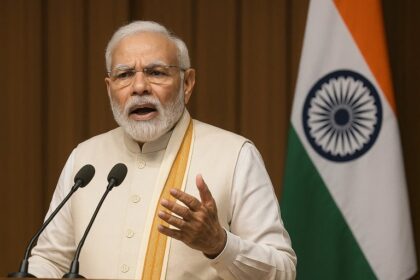Trump’s $1.4 Trillion Tariff Gamble: Economic Risks & Projections
President Trump’s sweeping tariffs on $1.4 trillion worth of imports from Canada, Mexico, and China, enacted on February 1, 2025, represent a high-stakes economic strategy aimed at reshaping trade dynamics. While projected to raise substantial revenue, the policy risks exacerbating inflation, disrupting supply chains, and triggering retaliatory trade wars.
Tariff Structure & Revenue Projections
- Scope:
- 25% tariffs on all Canadian/Mexican goods (excluding Canadian energy at 10%).
- 10% tariffs on Chinese imports.
- Revenue:
- $140 billion in 2025, rising to $1.5 trillion by 2035 if maintained.
- Conventional estimates suggest tariffs could fund $3.8 trillion in tax cuts over a decade.
Economic Impact: Costs vs. Benefits
Household Burden:
- Annual costs per U.S. household estimated between $1,700–$2,350 (10% tariff) and up to $3,900 with a 60% China tariff.
- Purchasing power decline equivalent to 7 months–2.5 years of inflation for middle-income families5.
Policy Analysis – Updated February 2, 2025
Tariff Structure & Financial Impact
Key Provisions
| Country | Tariff Rate | Exemptions | Covered Imports |
|---|---|---|---|
| Canada/Mexico | 25% | Canadian energy (10%) | All non-energy goods |
| China | 10% | None | All imports |
- 2025: $140 billion
- 10-Year Total: $1.5 trillion
- Tax Cut Funding Capacity: $3.8 trillion
Economic Consequences
Household Impact
- Annual cost per household: $1,700–$3,900
- Equivalent to 7 months–2.5 years of inflation for middle-income families
Macroeconomic Effects
| Metric | Scenario 1 (20% Universal + 60% China) | Scenario 2 (Current Policy) |
|---|---|---|
| GDP Decline | -1.3% | -0.4% |
| Job Losses | 1.1 million | 344,000 |
| Source: Tax Foundation Modeling (2025) |
- Inflation Acceleration:
- Consumer prices could rise 1.2–5.1%, targeting $1.4 trillion in imports (3× 2018–2019 trade war volume).
- Supply Chain Disruptions:
- $85 billion in auto industry tariffs threatens North American production.
- Retaliation:
- Projected $200 billion in foreign counter-tariffs on U.S. exports.
- Global Standing:
- U.S. effective tariff rate could hit 29%, surpassing 1899 levels.
Strategic Context
- Builds on 2018–2019 $380 billion trade war with China.
- Biden retained 62% of Trump-era tariffs, adding $18B on Chinese tech (2024).
Long-Term Outlook
Economists warn of stagflation risks:
- GDP decline: 0.4–1.3%
- Key failure risks:
- Delayed manufacturing reshoring
- Accelerated de-dollarization
- Global tariff escalation
Success hinges on rapid renegotiation of trade terms to avoid full-scale trade wars. Missteps could destabilize household finances and erode U.S. economic leadership. Analysis based on Tax Foundation, White House briefings, and trade policy modeling (2025).
Sectors at risk include automotive, agriculture, and metals in the U.S., with Mexico’s auto industry and Canada’s mineral processing facing acute pressure26.
Risks & Criticisms
- Inflation Acceleration:
- Tariffs target $1.4 trillion in imports (3× the 2018–2019 trade war volume), threatening price spikes in groceries, electronics, and vehicles6.
- Analysts warn of 1.2–5.1% consumer price hikes, compounding existing cost-of-living pressures.
- Supply Chain Disruptions:
- North American auto manufacturing, reliant on cross-border parts flows, faces $85 billion in annual tariffs, risking production halts6.
- Retaliatory Measures:
- Projected $200 billion in foreign tariffs on U.S. exports, targeting agriculture and machinery.
- Canada and Mexico may restrict energy exports, deepening U.S. energy costs2.
- Global Standing:
- U.S. effective tariff rate could rise to 29%, surpassing 1899 levels and ranking highest globally5.
Strategic Context & Defense
- Trump’s Rationale: Framed as a tool to reduce trade deficits, curb illegal immigration, and counter Chinese dominance6.
- Administration Claims: White House asserts tariffs will “reshore manufacturing” without harming growth, despite models suggesting otherwise46.
- Historical Precedent: Biden retained most Trump-era tariffs, adding $18 billion on Chinese tech in 2024.
Outlook
The policy tests Trump’s belief that tariffs are a “negotiation tool,” but economists widely warn of stagflation risks. With the Fed already battling inflation, the tariffs could force rate hikes, further slowing growth. While revenue gains are sizable, the $1.4 trillion gamble hinges on avoiding a full-blown trade war—a scenario even Trump’s allies call “the dumbest trade war in history”6. Success requires renegotiating trade terms swiftly, but missteps risk eroding U.S. economic leadership and household stability.












